Harvest season is a winery’s busiest time of year. It can be grueling and occasionally devastating, but also endlessly rewarding when the year’s crop of grapes are finally brought into the winery. What’s already a hectic and exhausting process — especially for farmers who take the time to hand-pick grapes — can be made even more difficult by extreme environmental conditions.
For many wine regions, the environment that makes them so spectacular can also be what makes reaping their grapes a terror. Vineyards with steep slopes, extreme winds, and rocky, rugged terrains can give a wine great acidity, deep concentration of flavor, and a true sense of place, but these factors can also be unforgiving for those who dare to harvest them. While this list is by no means exhaustive, here are six of the most challenging regions and vineyards to harvest.
Mosel, Germany
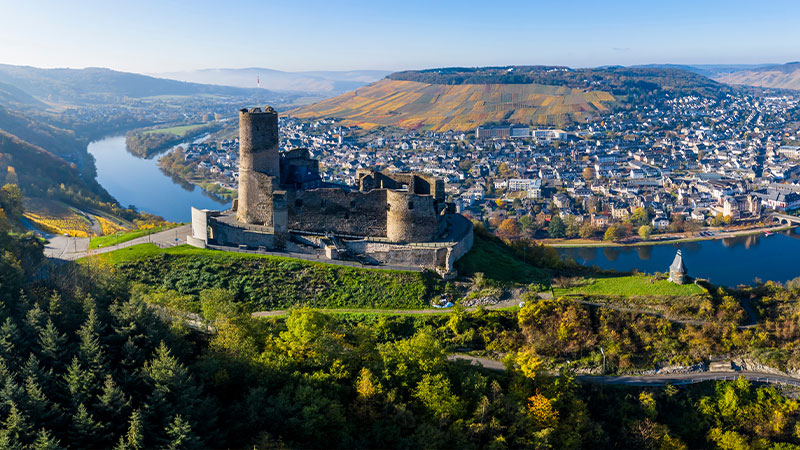
Mosel is known for its stunning Riesling with laser-like acidity. The region’s distinct terrain helps achieve this signature profile, including the slate soils, the influence of the river, and, of course, the extraordinary steep slopes. Half of the Mosel’s vineyards are on sharply angled sites with slopes inclined 30 degrees and higher, giving them ideal sun exposure. These vineyards are often terraced so viticulture is possible without rock climbing gear, and most of the grapes can only be harvested by hand, because machines are not able to reach the vineyards with their positioning. Burg Cochem, one of Mosel’s six wine-growing regions, is often referred to as “the terraced Mosel.” This subregion is also home to Bremmer Calmont, the steepest vineyard in Europe — planted at an astonishing 70-degree gradient.
Douro, Portugal
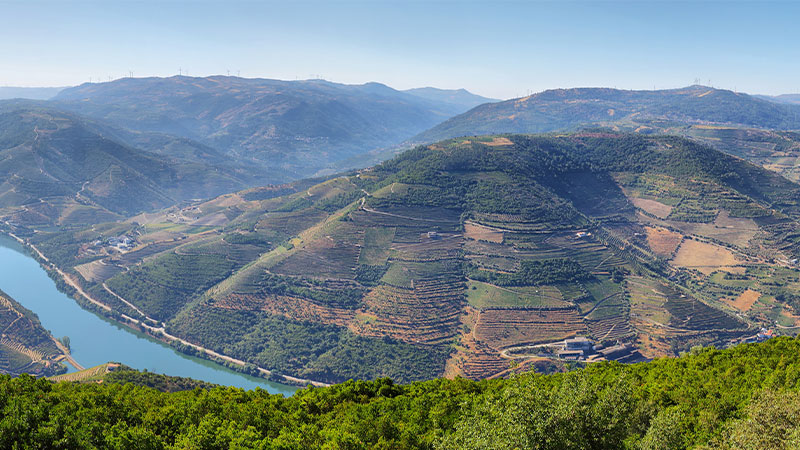
The rolling green hillsides of the Douro Valley make it one of the most stunning wine regions to visit in the world — but they also make it one of the most difficult to farm. The vineyards are located on rocky slopes with gradients over 30 degrees. Many of the historic producers in the region, like Quinta do Vallado, work with old vines that were initially planted in hard-to-navigate layouts. “The old vines in the Douro are special and unique. We are not just talking about their age, but also in the particular way in which these vineyards were planted, with a high density,” explains Francisco Ferreira, winemaker for Quinta do Vallado and great-great-great grandson of Dona Antónia Adelaide Ferreira. He mentions that approximately 7,000 vines are planted per hectare in the old-vine vineyards. This leaves no room for machines to get between the vines, so all the work needs to be done by hand.
Lavaux, Switzerland
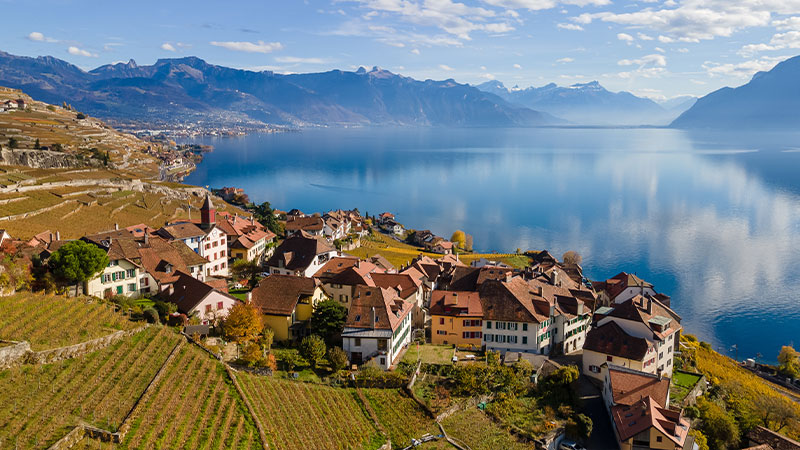
Lavaux is an appellation in western Switzerland located along the northern shores of Lake Geneva. The native Chasselas grape thrives in the high-elevation terraced vineyards that rise high above the lake, making for crisp and floral wines. The highest vineyards in the area reach an elevation of 1,150 feet and the famous grand-cru villages of Calamin and Dezaley can even reach a gradient of 45 degrees. Though they may be challenging to traverse, the dizzying slopes of these vineyards are what help make the wines so captivating.
Sierra de Gredos, Spain
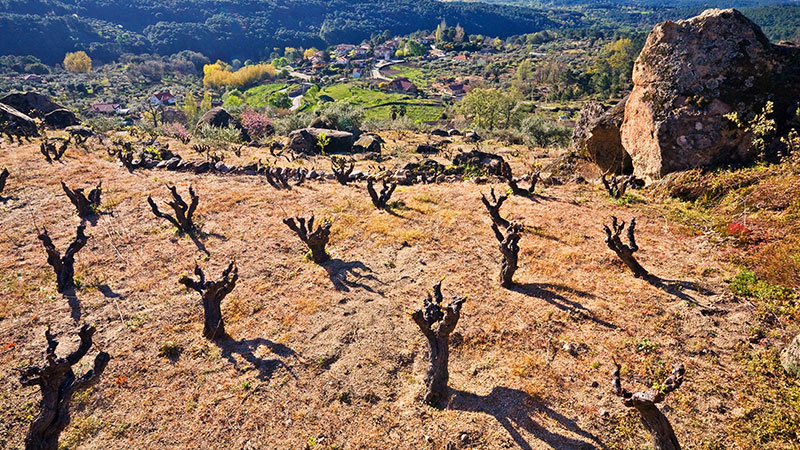
Located just outside of Madrid in central Spain, Sierra de Gredos is a haven for elegant, old-vine Grenache. Producers like Comando G have found gnarly old vines that range up to and beyond 100 years of age, and many of them are still own-rooted (meaning they haven’t been grafted onto American rootstock, as most vines have been since phylloxera devastated the vines of Europe.) The only catch: These vines are hidden in rugged mountainsides. Unlike the manicured rows of typical growing regions, the truly incredible wines here are made from vines that can only be found at high elevations about 1,000 meters above sea level in the rocky, granite hillsides. Though the vines are isolated and painstaking to cultivate, the gorgeous concentration and acidity of the final product is well worth the effort.
La Geria, Lanzarote, Canary Islands
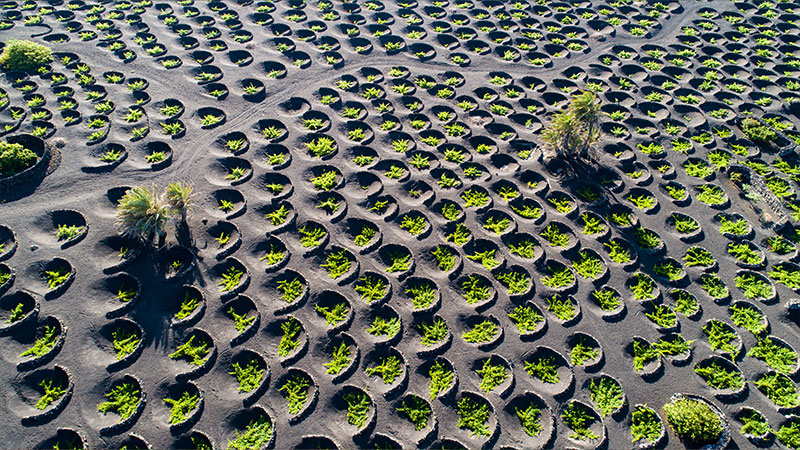
If you visit any typical vineyard around the world, you can pretty much predict what you’ll see — rows and rows of vines planted side-by-side. Well, if you visit the La Geria vineyard area on Lanzarote, the easternmost of Spain’s Canary Islands, you will be met with a bewilderingly different image. The region can only be described as otherworldly, and La Geria’s black volcanic soils and landscape dimpled with crater-like holes will likely make you think you’ve landed on Mars.
The island’s intense heat and extreme winds make the typical vine training patterns impossible, so the area has developed a system of hand-digging individual holes in the ground called “hoyos” for each of the vines. The farmers further protect the vines from the winds by building rock walls around the hoyos. So, instead of having the relative ease of moving down a row picking grapes in a quick and organized fashion whether by hand or by machine, the winemakers in La Geria have to face the intense heat and wind and individually visit each vine to harvest its fruit.
Jackass Hill, Sonoma, Calif.
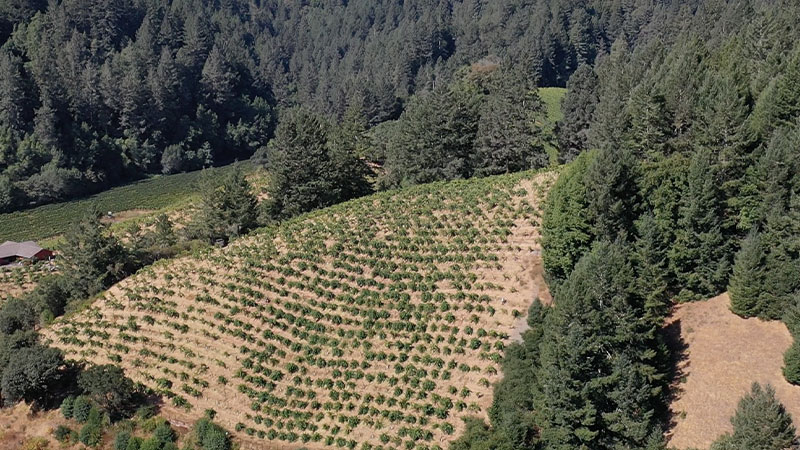
Jackass Hill in Sonoma’s Russian River Valley is owned by the historic Martinelli Winery. It was planted in the 1880s and is the only original vineyard Giuseppe Martinelli planted that is still in use. This vineyard earned its indelicate name because the Martinelli family always says “you’d have to be a jackass to farm a hill that steep.” With extreme slopes that reach 65 degrees, it is the steepest, non-terraced vineyard in Sonoma County, and possibly in the U.S. Most wine regions in the world that reach that gradient terrace their vineyards, but Jackass Hill embraces its hillside terrain — one wrong step, and you’re tumbling down. The vines are dry farmed and over 130 years old, and several generations of the Martinelli family have worked the taxing land to produce truly special wine.
